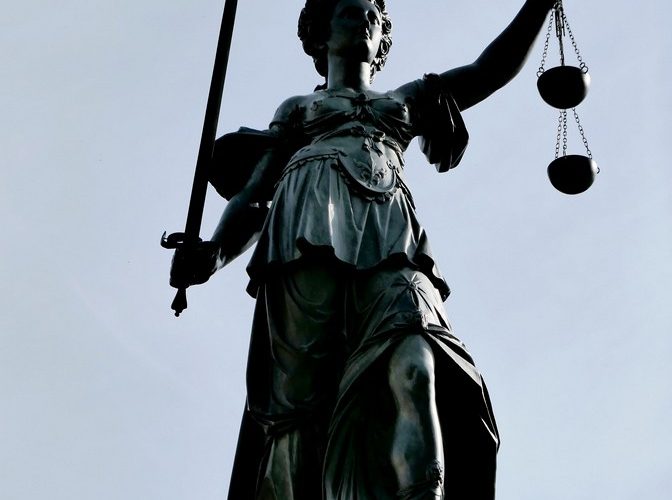On April 1, 2004, the ECJ issued its decision in the case C-320/02 (Stenholmen).
Context: Sixth VAT Directive – Article 26a – Special arrangements applicable to second-hand goods – The term ‘second-hand goods’ – Horse sold on after training.
Article in the EU VAT Directive
Article 26a of the Sixth VAT Directive (Article 311 of the EU VAT Directive 2006/112/EC).
Article 311
1. For the purposes of this Chapter, and without prejudice to other Community provisions, the following definitions shall apply:
(1) ‘second-hand goods’ means movable tangible property that is suitable for further use as it is or after repair, other than works of art, collectors’ items or antiques and other than precious metals or precious stones as defined by the Member States;
(2) ‘works of art’ means the objects listed in Annex IX, Part A;
(3) ‘collectors’ items’ means the objects listed in Annex IX, Part B;
(4) ‘antiques’ means the objects listed in Annex IX, Part C;
(5) ‘taxable dealer’ means any taxable person who, in the course of his economic activity and with a view to resale, purchases, or applies for the purposes of his business, or imports, second-hand goods, works of art, collectors’ items or antiques, whether that taxable person is acting for himself or on behalf of another person pursuant to a contract under which commission is payable on purchase or sale;
(6) ‘organiser of a sale by public auction’ means any taxable person who, in the course of his economic activity, offers goods for sale by public auction with a view to handing them over to the highest bidder;
(7) ‘principal of an organiser of a sale by public auction’ means any person who transmits goods to an organiser of a sale by public auction pursuant to a contract under which commission is payable on a sale.
2. Member States need not regard as works of art the objects listed in points (5), (6) or (7) of Annex IX, Part A.
3. The contract under which commission is payable on a sale, referred to in point (7) of paragraph 1, must provide that the organiser of the sale is to put up the goods for public auction in his own name but on behalf of his principal and that he is to hand over the goods, in his own name but on behalf of his principal, to the highest bidder at the public auction.
Facts
- Stenholmen wishes to buy young horses from private individuals in order to train them as riding horses and then sell them on. In order to clarify the tax consequences of that business, the company referred the following question to the Skatterättsnämnden (Revenue Law Commission):
- ‘Is a horse – which is bought as an untrained young horse from a private individual (rather than a breeder) and is sold as a riding horse after training – to be regarded as second-hand goods at the time of sale, so that the rules on profit margin taxation can be applied?’
- In a preliminary opinion of 12 November 2001 the Skatterättsnämnden replied to that question in the negative. The grounds for that opinion, as set out in the order for reference, are as follows:
- ‘The definition of the term second-hand goods specifies that, apart from having been used, the goods must be suitable for further use as they are or following repair. Under the definition, it seems that it must be determined whether the goods are second-hand at the time the – subsequent – dealer acquires them. That can also be inferred from the provisions which define the term taxable dealer. The goods are thus sold on in the condition in which they were acquired, or – it may be assumed – if they are in a bad condition and thus do not fulfil a function which is normal and expected in those goods, after they have been rendered usable again by repair.
- It clearly follows that, before the goods are sold on, as long as they have been in the dealer’s possession, they cannot have acquired characteristics which affect their value other than by repair or similar. That may be considered to be the case irrespective of whether the characteristics were added through a biological process or in some other way. Living, growing organisms, whether animals or plants, undergo changes during their life cycles such that they can be considered, to a greater or lesser extent, to be continuously acquiring new characteristics which may affect their value.
- Moreover, it must be borne in mind that, leaving aside the term second-hand goods, there is no doubt that the goods covered by Chapter 9a of the ML constitute inanimate objects which, with the exception of certain collectors’ items, have been manufactured. In normal usage the term second-hand goods tends to be reserved for such objects, rather than living organisms, and the word ‘repair’ suggests something manufactured, the function of which can be restored by repair.
- In the light of the above observations and since the animals in the present case have, moreover, been endowed with skills as riding horses, which they did not have previously, or at least when Stenholmen acquired them, or did not have to the same extent as when they were sold on, the Skatterättsnämnden finds that the sale of horses cannot be classified as sales of second-hand goods.
Questions
1. Can an animal be considered to be second-hand goods?
If that question is answered in the affirmative, the Court is asked to answer the following question.
2. Is an animal which is purchased from a private individual (rather than a breeder) and which is sold, after training, for a specific purpose to be considered to be second-hand goods?
AG Opinion
1. An animal can be considered to be second-hand goods within the meaning of Article 26a(A)(d) of Sixth Council Directive 77/388/EEC of 17 May 1977 on the harmonisation of the laws of the Member States relating to turnover taxes – Common system of value added tax: uniform basis of assessment.
2. An animal which is purchased from a private individual (rather than a breeder) and which is sold, after training for a specific purpose, can be considered to be second-hand goods within the meaning of Article 26a(A)(d) of Sixth Council Directive 77/388/EEC of 17 May 1977 on the harmonisation of the laws of the Member States relating to turnover taxes – Common system of value added tax: uniform basis of assessment.
Decision
- 1. Article 26a of the Sixth Council Directive 77/388/EEC of 17 May 1977 on the harmonization of the laws of the Member States relating to turnover taxes – Common system of value added tax: uniform basis of assessment, as amended by Council Directive 94/5/EC of 14 February 1994, must be interpreted as meaning that live animals may be considered to be second-hand goods within the meaning of this provision.
2. Thus an animal bought from a private individual (other than the breeder) which is sold on after training for a specific use may be considered to be second-hand goods.
Summary
Special arrangement for used goods – Concept of “used goods” – Horse resold after training
Live animals can be considered used goods.
Therefore, an animal purchased from a private individual (other than the breeder), which is resold after training for a specific use, can be regarded as a used good.
Source
Similar ECJ cases
Reference to the case in the other EU MS
Newsletters















